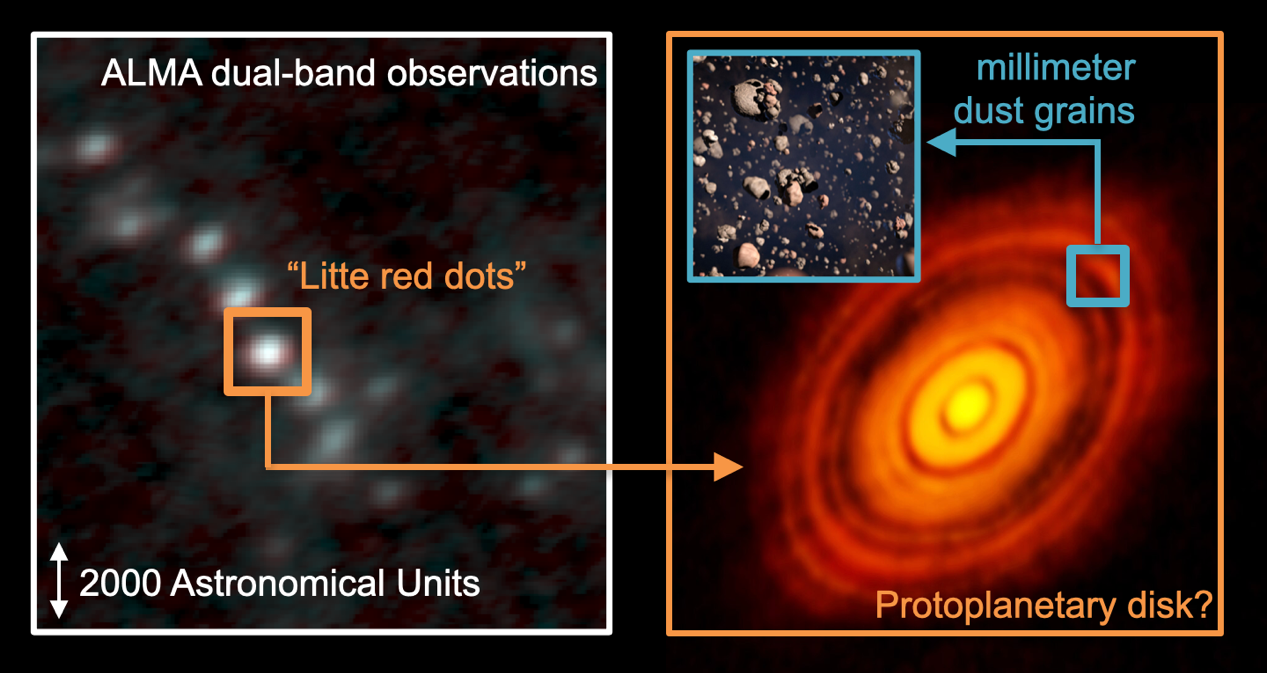Are we alone in the Universe? And where did our planetary home come from? For decades, astronomers have attempted to answer these question by studying planetary formation. In the process, they have discovered hundreds of protoplanetary disks-structures around young stars that resemble what our own solar system likely looked like in its earliest stage.
Most protoplanetary disks have been observed in cosmically quiet environments. However, in a breakthrough that could reshape our understanding of how planetary systems form, an international team of astronomers has uncovered over 500 dense star-forming cores-many likely harboring protoplanetary disks-within three representative molecular clouds in the Milky Way's Central Molecular Zone (CMZ)-a high-pressure, high-density region near the Milky Way Galactic Center.
The study, conducted by researchers from the Shanghai Astronomical Observatory (SHAO) of the Chinese Academy of Sciences (CAS), Kavli Institute for Astronomy and Astrophysics at Peking University (KIAA, PKU), and the University of Cologne (UoC), provides rare insight into how stars and planets may emerge under extreme galactic conditions.
Detecting such systems in the CMZ is exceptionally challenging. These regions are distant, faint, and deeply embedded in thick layers of interstellar dust. To overcome these obstacles, the researchers utilized the Atacama Large Millimeter/submillimeter Array (ALMA), an interferometric telescope that combines signals from antennas spread over several kilometers to achieve extraordinary angular resolution. This allows astronomers to peer through thick layers of interstellar dust and resolve features as small as 1,000 astronomical units (AU) at distances of 8.3 kiloparsecs-equivalent to about 17 billion AU.
To maximize detail, the team employed dual-band observations, capturing data at two different wavelengths simultaneously. This technique offers critical spectral information about temperature, dust composition, and structural characteristics-much like how human vision uses color contrast to make sense of the world. Dual-band imaging provides critical spectral information about the temperature, dust properties, and structure of these remote systems.
"Only with ALMA can we open this sharp new window onto one of the most enigmatic regions of our Galaxy," said Prof. LU Xing, a researcher at SHAO and the Principal Investigator of the ALMA observational project.
Among the most striking findings: over 70% of the dense cores exhibited unexpected spectral reddening. After eliminating possible observational artifacts, the researchers proposed two main interpretations, both implying the widespread presence of protoplanetary disks-structures thought to represent early stages of solar system formation.
"We were astonished to see these 'little red dots' cross the whole molecular clouds," said XU Fengwei, first author of the study and now a PhD student at KIAA, PKU and exchange student at UoC. "They are telling us the hidden nature of dense star-forming cores."
One explanation is that these cores are not transparent, homogeneous spheres, as once thought. Instead, they may contain smaller, optically thick structures-possibly protoplanetary disks-whose self-absorption at shorter wavelengths results in the observed reddening.
"This challenges our original assumption of canonical dense cores," said Prof. WANG Ke, XU's supervisor.
Alternatively, the reddening could result from grain growth within the cores.
"In typical interstellar environments, dust grains are only a few microns in size," said Prof. Hauyu Baobab Liu, who led the radiative transfer modeling in the study. "But our models indicate that some cores may contain millimeter-sized grains, which could only form in protoplanetary disks and then be expelled-perhaps by protostellar outflows."
Regardless of which scenario prevails, both require the presence of protoplanetary disks. The findings suggest that over 300 such systems may already be forming within just these three CMZ clouds.
Future multi-band observations will help to further constrain their physical properties and evolutionary stages-offering a rare glimpse into the early processes that give rise to planetary systems like our own, even in the most extreme corners of the Milky Way.
This work was supported by the National Key R&D Program of China, the Strategic Priority Research Program of CAS, and the National Natural Science Foundation of China, among others.

Sky models and simulated observations by ALMA (credit: XU Fengwei; ALMA Partnership; and Laura Pérez of NRAO)






